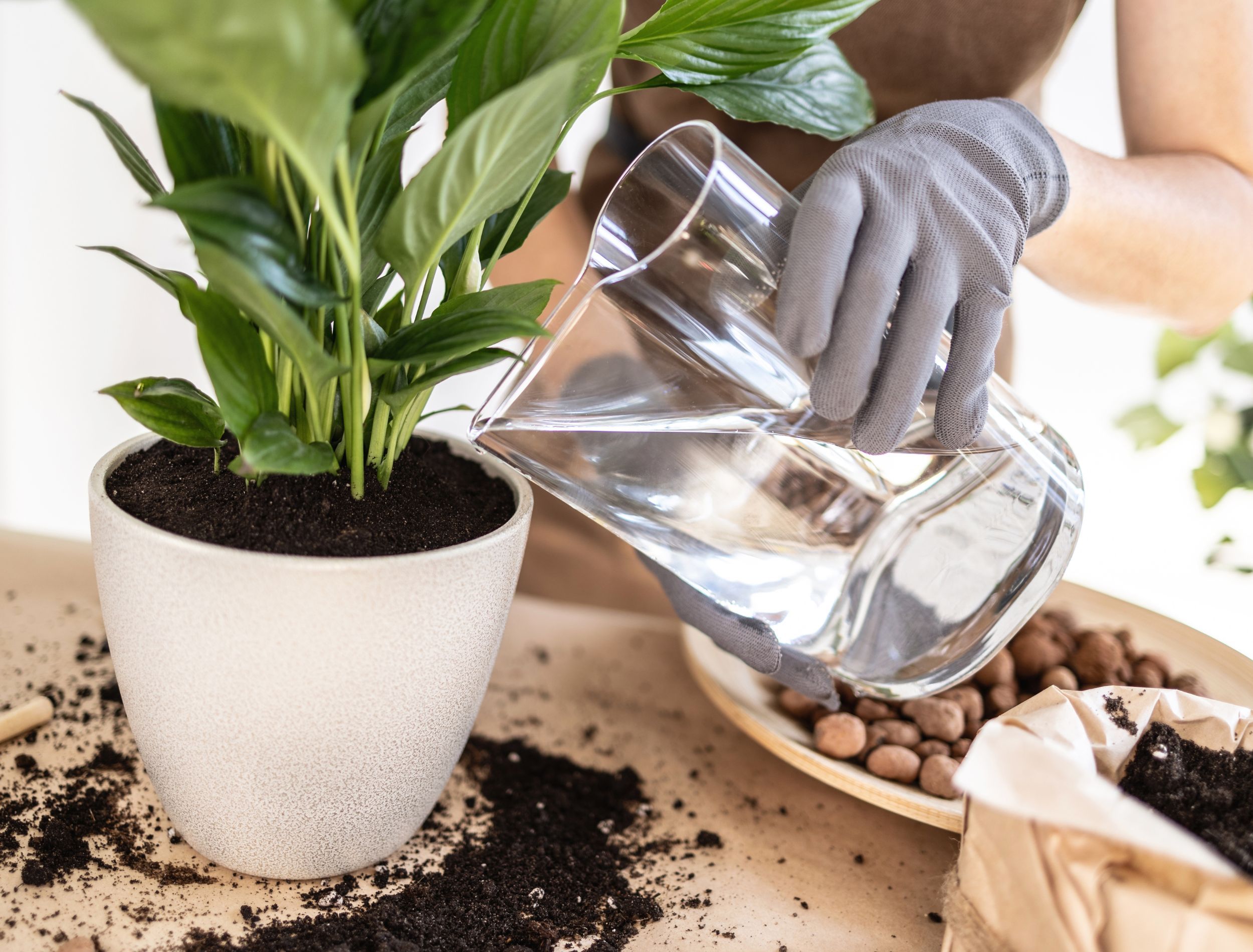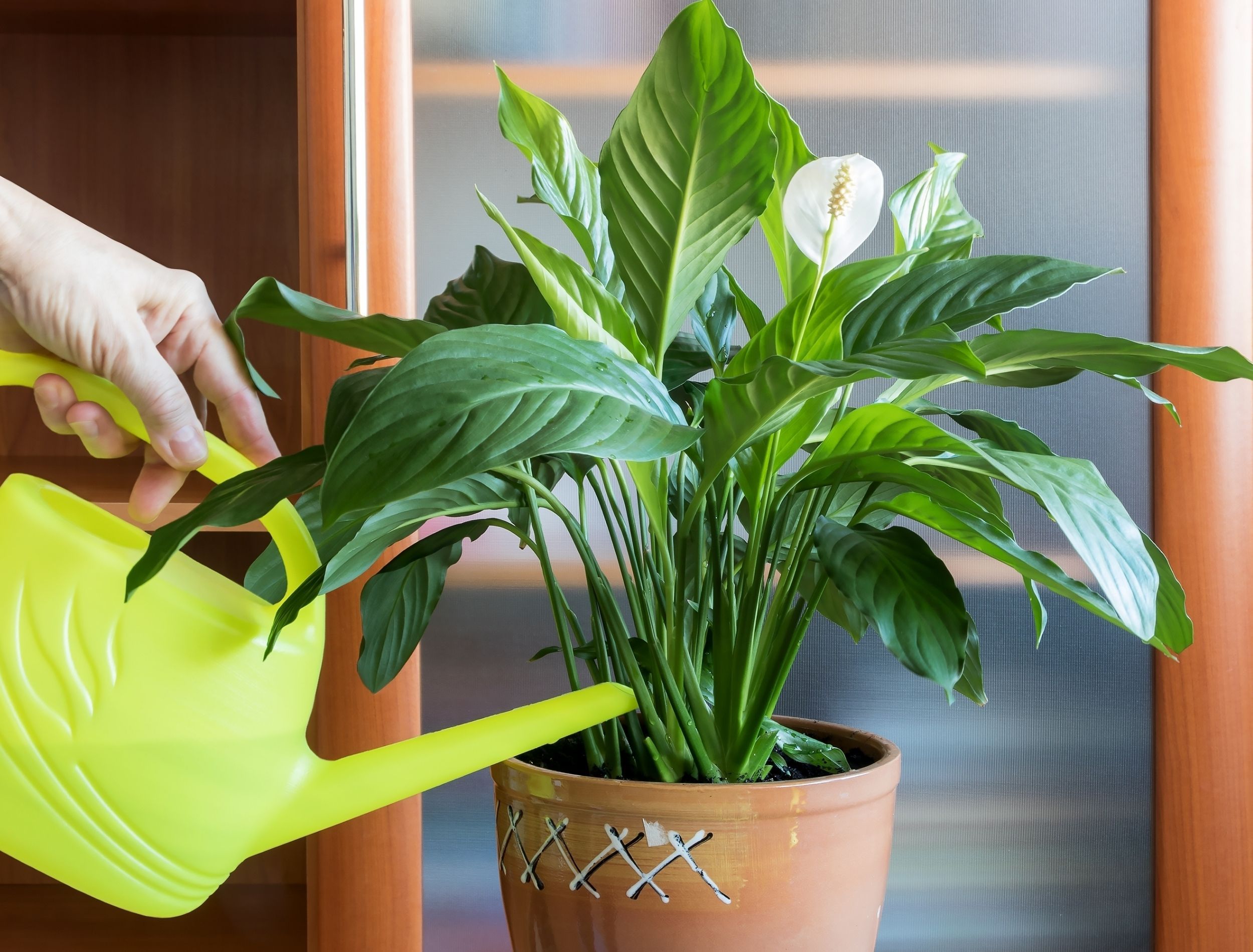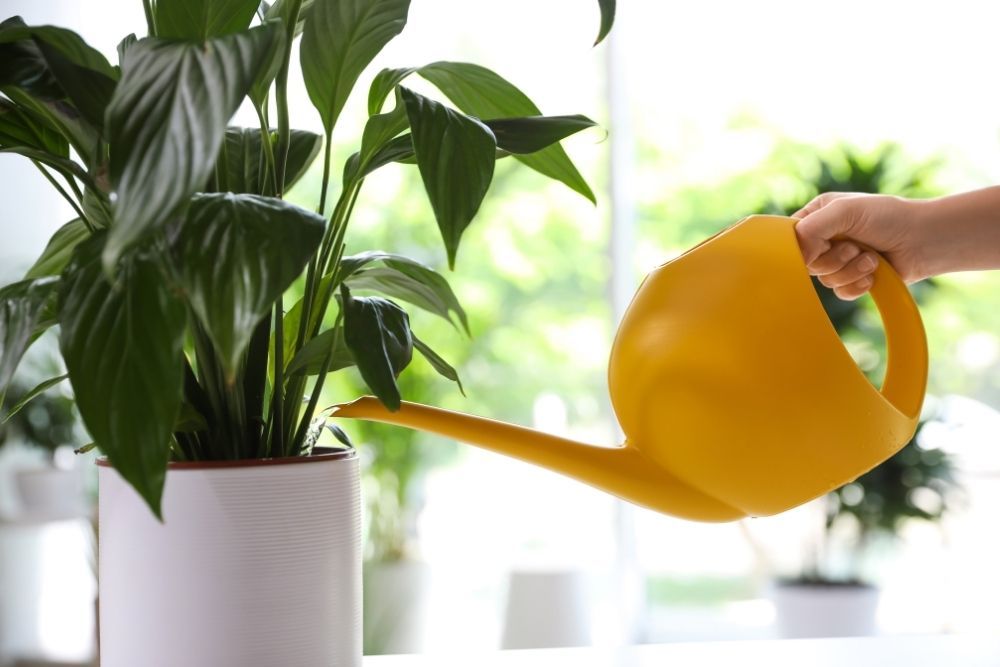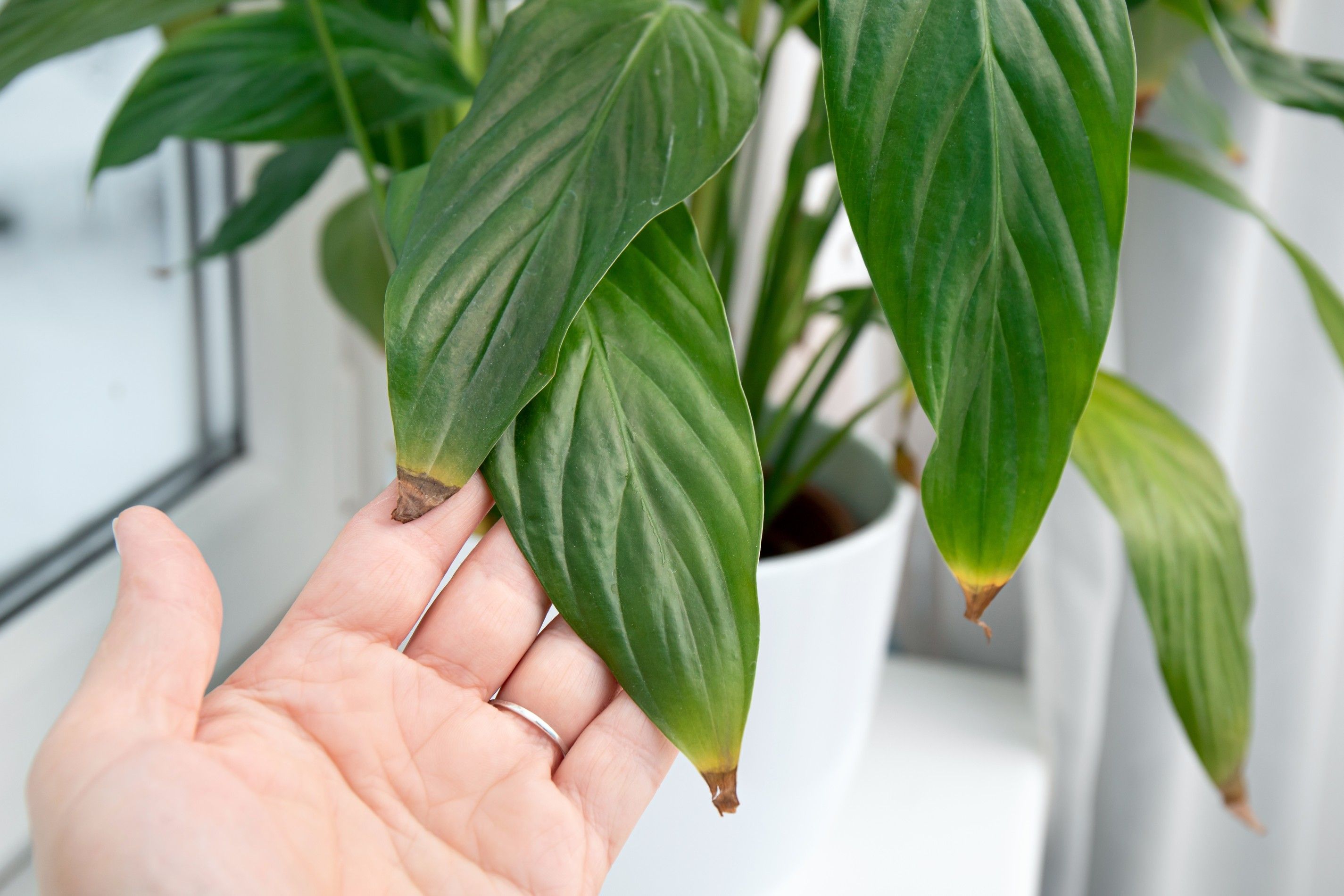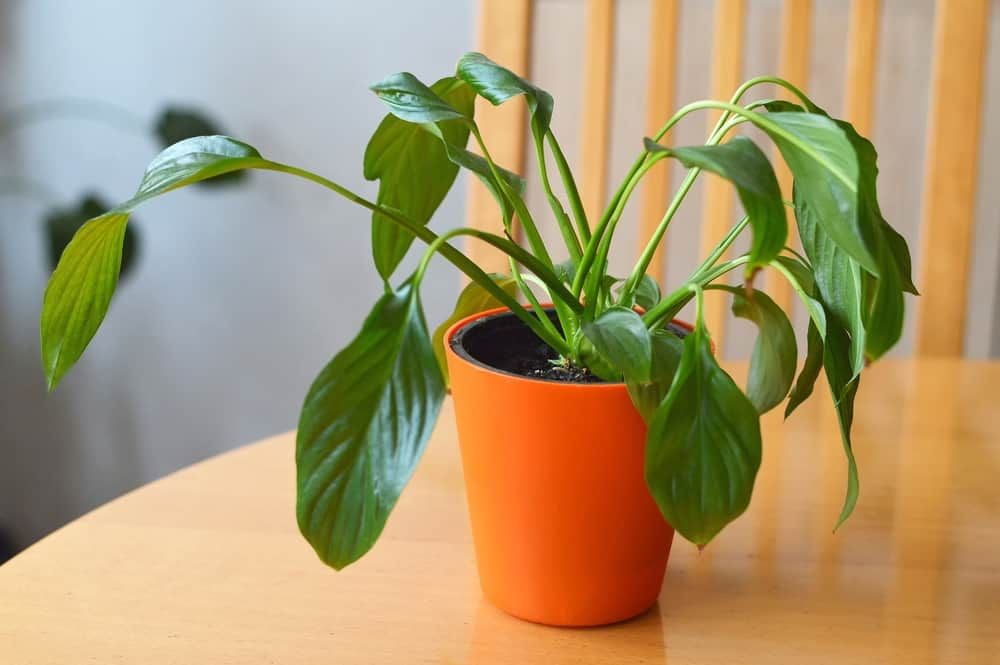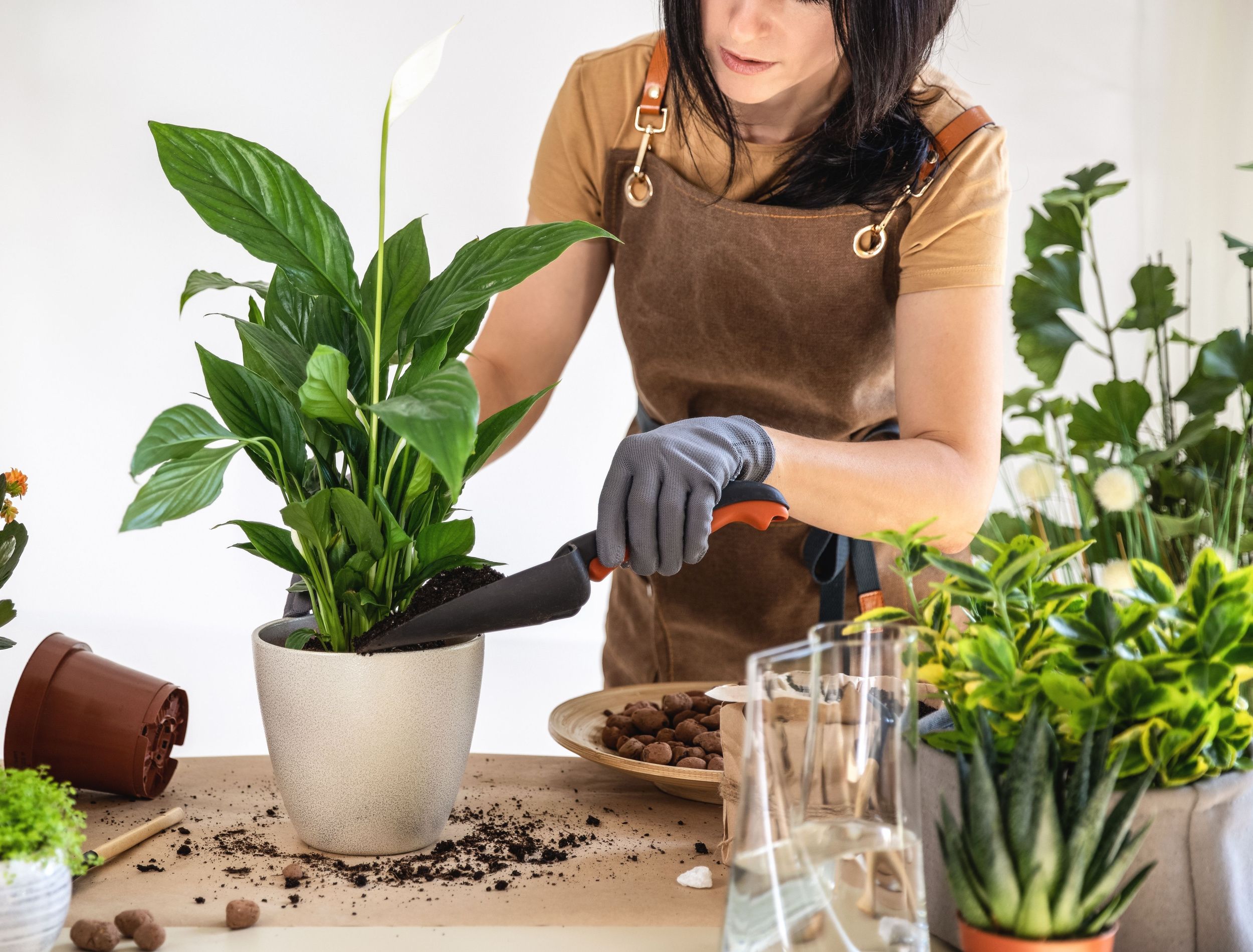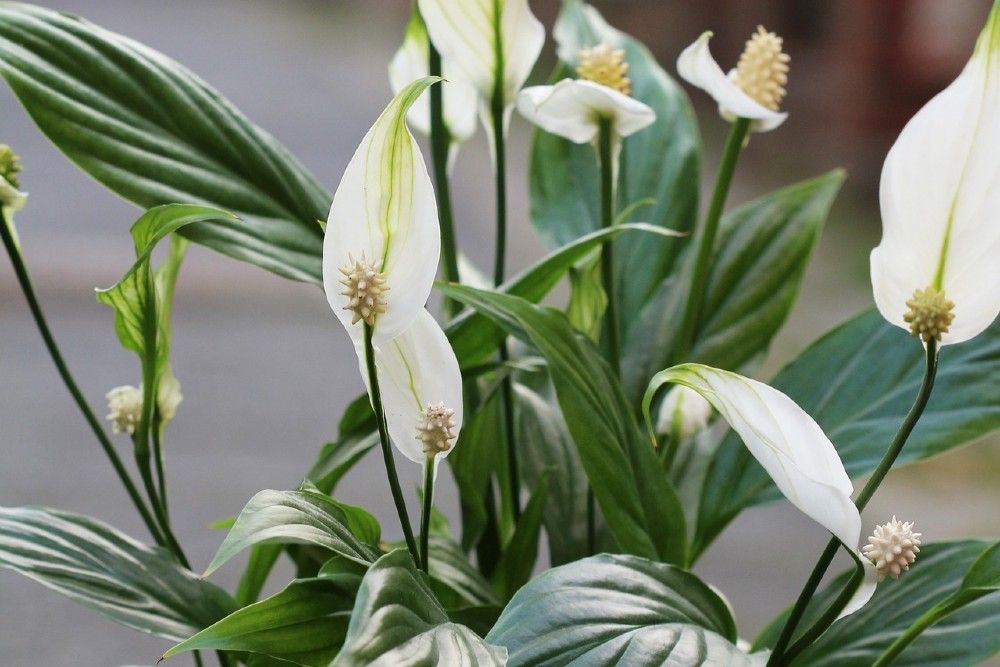Key Takeaways
- Peace lilies are low-maintenance houseplants that add uplifting greenery and beautiful white blooms to your home environment.
- These plants help refresh indoor air by filtering out pollutants like benzene.
- Proper watering is crucial for the health of peace lilies, ensuring the soil is moist but not overly wet. Watering frequency should be adjusted based on the season.
Cultivating plants indoors is a fabulous way to enjoy gardening year-round in the comfort of your own home. Peace lilies (Spathiphyllum spp.) are delightful houseplants that offer several benefits for the great indoors!
- Peace lilies infuse your home with uplifting greenery and showy white blooms (also known as spathe).
- They refresh the air, filtering mold, as well as indoor pollutants like benzene (which occurs from cigarette smoke).
- Plus, peace lilies are low-maintenance, so they are ideal for busy gardeners.
The key to a stunning, healthy peace lily? Proper watering! Learn everything you need to know about how often to water a peace lily.
North Carolina State University, advises that peace lilies have foliage that's poisonous for pets like cats and dogs. It causes vomiting and burning in the mouth. Keep pets and children away. Reach out to a medical professional if ingestion or symptoms occur.
How Often Do You Water a Peace Lily?
When the top 2 inches of soil feel dry or twice-weekly in summer and twice-monthly in winter
Following best practices for how often to water a peace lily indoors, is a superb way to provide high-quality plant care. Peace lilies enjoy soil that is moist but not overly wet.
- In warmer summer months, water your peace lily about twice a week.
- During summer, your peace lily needs more frequent watering because it's actively growing and blooming to showcase its magnificent flowers! Plus, soil typically dries out rapidly on sizzling summer days.
- Through chilly winter months, reduce watering to once every two weeks.
The University of Maryland, recommends verifying whether your plant needs water by inserting your finger into the top 2 inches of soil. If the potting mix feels dry 2 inches deep, soak the soil until you see water dripping out of the drainage holes in the base of your houseplant's container.
Another way to tell if your peace lily needs water is to lift the pot. Is it heavy or light? A light pot means the weight of the water is gone, and it's time to irrigate again.
Use the Proper Type of Water
Set water out for a day, so it warms to room temperature
Unlike some houseplants that tolerate varied water temperatures, to sustain your peace lily’s well-being, room temperature water is best.
- Fill up a watering can and let it rest at room temperature for 24 hours.
- Tap water is usually cold, so it shocks plants. Peace lilies grow best at 68 to 85 degrees Fahrenheit. Setting your watering can out for the day helps the water gradually warm up, so it closely matches optimal growing temperatures.
- Resting water at room temperature also allows chlorine to evaporate from the water.
- Chlorine is an element often found in tap and drinking water. Chlorine and fluoride can cause peace lily foliage to turn brown at the tips — a blemish any plant parent does not wish upon their green babies.
Skip the risk of brown leaf tips! Collect rainwater, or use filtered or distilled water, then let it warm to room temperature.
While using ice cubes to water your plant may be a trendy idea, the frigid temperature of melting ice cubes can shock a plant's roots. So, it's best to let the water warm up first.
Avoid Excessively Watering Peace Lilies
Overwatering leads to root rot fungal disease that can kill your plant
Overwatering is a common mistake when growing a peace lily. If the soil is sopping wet and soggy, the plant can't absorb the water fast enough.
- Lingering water in the soil leads to diseases such as root rot.
- According to the University of Wisconsin-Madison, root rots are fungal pathogens (Pythium spp.) or (Phytophthora spp.) that flourish in damp, wet soil, and kill plants.
- Root rot can also cause yellowing or wilting foliage, stunt growth, and encourage moldy soil. If you see signs of overwatering or root rot, let the soil dry at least 2 inches deep before watering again.
One of the best ways to avoid irrigation issues and prevent water from gathering around your plant’s roots is to use a pot with drainage holes.
Prevent Underwatering With Proper Moisture
A lack of water causes dull, drooping foliage that drops off of your plant
Underwatering is another frequent problem with peace lily care. Check the soil for moisture — twice-weekly in summer, and at least once every two weeks in winter — then irrigate when the soil feels dry to prevent underwatering.
You can also watch for common symptoms of underwatering.
- Its foliage and stems will start drooping and wilting.
- Foliage may turn yellow and fall off your houseplant.
- Leaves lose their glossy shine and look dull or drab.
Remember the handy trick of checking the soil 2 inches deep with your fingertip to see if your plant is ready for water.
Encourage Overall Plant Health
Provide partial sun and temperatures of 68 to 85 degrees Fahrenheit
Peace lilies aren’t fussy. However, they do benefit from mindful plant care practices that consider their growing preferences.
|
Sun exposure |
As a partial or full-shade plant, the peace lily is content to adorn corners, hallways, and living rooms where it can get two to six hours of light from a north or east-facing window. It also tolerates deep shade with less than two hours of sun. |
|
Temperature preferences |
They thrive in warm, cozy conditions. A peace lily requires temperatures between 68 and 85 degrees Fahrenheit, with no cold drafts. |
|
Humidity requirements |
Peace lilies love humidity! Boost the humidity around your houseplant by filling a saucer with gravel or small stones and water. Set the pot on top of the gravel, so that the bottom is not sitting in the water (resting the container directly in water could prompt root rot). |
|
Cultivating peace lilies outdoors |
Though peace lilies are typically houseplants, they can survive outdoors in zones 10 to 12. Give your peace lily a shady spot in the yard and transfer it indoors when temperatures drop. Missouri Botanical Garden warns that when it dips to 40 degrees Fahrenheit or lower, the cold harms the foliage, stems, and roots. |
Hydrate Your Peace Lily Properly
Watering recap
Peace lilies are a stunning addition to indoor gardens! It is well worth taking the time to irrigate your plants correctly, so you can enjoy their showstopping creamy white flowers in summer!
- Check the top 2 inches of soil for dryness. When it's dry to the touch, take out a watering can and moisten the soil until it drips out the base.
- On average, you should water your peace lily about once a week in summer and every two weeks in winter.
- Use room temperature water to reduce the amount of chlorine and the risk of cold tap water shocking your plant.
Then, don't forget to watch for signs of overwatering like drooping yellow foliage and sopping wet soil. Alternatively, if you see wilting, dull leaves, it's a sign your peace lily isn't getting enough water. Tailor your watering routine, so you can provide bespoke care that encourages a thriving plant!

